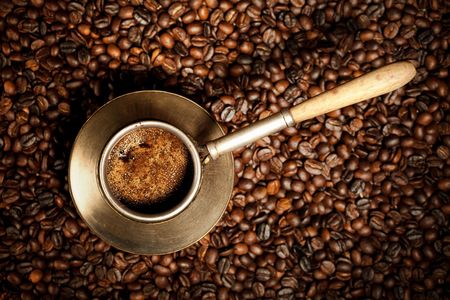1. Introduction: The Rise of Experimental Coffee Processing
In recent years, experimental coffee processing has taken the U.S. specialty coffee scene by storm, captivating both café owners and consumers eager for new taste experiences. Traditionally, American coffee drinkers have gravitated toward familiar washed or natural processed coffees, but a wave of innovation is challenging these norms. Today, methods like anaerobic fermentation, carbonic maceration, and lactic processing are popping up on café menus from coast to coast. This surge in experimentation is driven by the desire to unlock unique flavor profiles and push the boundaries of what a cup of coffee can be. With U.S. consumers growing more adventurous and knowledgeable about specialty coffee, cafés are embracing these novel processes to differentiate themselves and cater to an audience hungry for discovery. The result? A vibrant, competitive market where cutting-edge processing techniques are redefining how Americans experience their daily brew.
2. Anaerobic Fermentation: Unlocking Bold New Flavors
One of the most talked-about experimental coffee processing methods making waves in U.S. cafés is anaerobic fermentation. This process, which involves fermenting coffee cherries in sealed, oxygen-free tanks, is revolutionizing how American baristas and roasters approach flavor development. The controlled environment allows for extended fermentation, encouraging unique microbial activity that results in strikingly bold and complex flavor profiles rarely found in traditionally processed beans.
Unlike washed or natural processes, anaerobic fermentation enables producers to fine-tune variables such as temperature, time, and pH levels. This level of precision leads to coffees with pronounced notes—think tropical fruits, deep florals, or even sparkling acidity—often described by café owners as “game-changers” for their menus. Consumers across the U.S. are increasingly drawn to these distinctive taste experiences, prompting specialty cafés to spotlight anaerobic lots as limited-edition offerings or feature them in signature drinks.
Flavor Profiles: Traditional vs Anaerobic Processing
| Processing Method | Common Flavor Notes | Mouthfeel | Popularity in U.S. Cafés |
|---|---|---|---|
| Washed | Citrus, Clean, Light Florals | Crisp, Light Body | High (Classic Menus) |
| Natural | Berries, Chocolate, Fruity Sweetness | Syrupy, Heavier Body | Medium (Seasonal Specials) |
| Anaerobic Fermentation | Tropical Fruit, Spice, Intense Floral, Funky Acidity | Velvety, Lively Mouthfeel | Rising Fast (Experimental & Featured Offerings) |
Why Are U.S. Cafés Highlighting Anaerobic Coffees?
The drive for innovation and differentiation is pushing American cafés to embrace anaerobic coffees not just for their eye-catching flavors but also for the stories behind each batch. These beans often come with detailed producer notes and origin information—elements that resonate with the values of transparency and traceability cherished by today’s U.S. coffee drinkers. In bustling urban markets like New York City, Los Angeles, and Seattle, cafés market anaerobic coffees as exclusive experiences that elevate both pour-over and espresso programs.
The Bottom Line for Café Owners and Coffee Lovers
Anaerobic fermentation is more than just a trend—it’s a bold step toward redefining what American consumers expect from specialty coffee. As more U.S. cafés invest in sourcing these experimental lots and educating their customers about the process, expect to see anaerobic coffees continue to take center stage on menus nationwide.
![]()
3. Honey & Natural Process Coffees: Sweetness Redefined
In the evolving landscape of experimental coffee processing in the U.S., honey and natural process coffees are capturing the attention of both baristas and consumers seeking a sweeter, more vibrant cup profile. These methods, originating from coffee-producing regions like Central America and Ethiopia, have found their way into American roasteries and specialty cafés eager to push flavor boundaries.
What Makes Honey and Natural Processes Stand Out?
The honey process involves removing the skin of the coffee cherry while leaving varying amounts of sticky mucilage (the “honey”) on the bean as it dries. The natural process, meanwhile, allows cherries to dry intact with the fruit still surrounding the bean. Both approaches encourage sugars from the fruit to infuse into the bean during drying, resulting in pronounced sweetness, jammy fruit notes, and a creamy mouthfeel that stands apart from traditional washed coffees.
Sensory Benefits Driving U.S. Demand
For U.S. consumers—especially those frequenting third-wave coffee shops—the appeal lies in these bold, unconventional flavor profiles. Honey-processed beans tend to deliver syrupy sweetness with hints of stone fruit or tropical flavors, while naturals can burst with berry-like acidity and winey complexity. Cafés are embracing these sensory benefits, offering single-origin pours or limited-time espresso features that highlight each process’s unique attributes.
Sourcing Strategies & Marketing Innovations
American roasters are forging direct relationships with producers specializing in experimental processing. They often travel to origin countries to select micro-lots processed using honey or natural methods, ensuring quality and traceability. On café menus and packaging, storytelling plays a central role: descriptions emphasize not only tasting notes but also processing details and farm partnerships, resonating with consumers’ desire for transparency and adventure in their coffee choices.
As demand grows, more U.S. roasters are experimenting with exclusive honey and natural lots—sometimes even collaborating with producers to develop custom processing protocols. This ongoing innovation is redefining what sweetness means in specialty coffee across America’s café scene.
4. Carbonic Maceration and Beyond: Borrowing From Winemaking
One of the most intriguing experimental coffee processing trends sweeping U.S. cafés is the adaptation of winemaking techniques, particularly carbonic maceration. This method, originally developed for Beaujolais wines, involves fermenting whole coffee cherries in a sealed, CO2-rich environment before pulping. The result? A dramatic transformation in cup profiles that has captivated American coffee enthusiasts and roasters alike.
In the context of specialty coffee, carbonic maceration unlocks vibrant fruit notes, heightened acidity, and a silky texture—qualities often likened to natural wines. These coffees frequently display tasting notes such as tropical fruit, bubblegum, or even red wine itself, pushing the boundaries of what consumers expect from their daily brew. The technique also allows producers to experiment with fermentation time, temperature control, and yeast strains to create unique flavor signatures that stand out on café menus.
Comparing Processing Techniques
| Processing Method | Origin/Influence | Typical Flavor Profile | Popularity in U.S. Cafés |
|---|---|---|---|
| Washed | Traditional Coffee | Clean, Bright Acidity | High (classic staple) |
| Natural/Dry | Coffee Tradition | Fruity, Heavy Body | Moderate (increasing) |
| Carbonic Maceration | Winemaking Crossover | Juicy, Complex, Wine-Like | Rapidly Growing |
| Anaerobic Fermentation | Coffee Innovation | Sparkling Acidity, Funky Notes | Niche but trending up |
The Appeal to American Palates
The American specialty coffee scene prizes novelty and distinctive cup experiences. Carbonic maceration’s sensory impact—bold aromatics and layered flavors—aligns perfectly with consumer demand for memorable, conversation-starting coffees. Many third-wave cafés use these lots as limited releases or competition coffees to showcase both producer innovation and their own brewing prowess.
Equipment Considerations for Cafés
- Brew Methods: Pour-over devices (like Hario V60 or Kalita Wave) are preferred for highlighting nuanced flavors from carbonic macerated beans.
- Grinders: High-precision burr grinders help retain aromatic complexity during preparation.
- Tasting Flights: Offering side-by-side comparisons with washed or natural coffees educates customers about the process’s impact.
The Bottom Line for U.S. Operators
Cafés leveraging carbonic maceration and other crossover fermentation methods are not just following a trend—they’re elevating the coffee experience. By borrowing from winemaking’s playbook, they cater to adventurous palates and reinforce their reputation as leaders in specialty coffee innovation.
5. Barista and Consumer Perspectives: Embracing the Unconventional
As experimental coffee processing continues to sweep through U.S. cafés, both baristas and coffee enthusiasts are finding themselves at the forefront of a flavor revolution. The introduction of funky, fruity, and unexpected flavor profiles—often produced through anaerobic fermentation, carbonic maceration, or honey processing—has challenged traditional palates and created new opportunities for education and excitement on both sides of the counter.
Baristas as Flavor Ambassadors
Across the country, skilled baristas are embracing their roles as educators and taste guides. For many, serving experimental coffees means more than just pulling a shot—it involves storytelling and sensory coaching. Baristas often host tasting flights, offer detailed flavor notes, and explain the specific processing methods that give rise to unique aromas and flavors. In cities like Portland, Seattle, and New York, it’s common to see staff describing a natural-processed Ethiopian as “bursting with blueberry jam,” or highlighting the wine-like acidity of an anaerobic Colombian micro-lot. This hands-on approach helps demystify unfamiliar flavors and makes the café experience more interactive.
Consumer Curiosity and Openness
American coffee drinkers are increasingly open to trying unconventional brews. Younger demographics, in particular, are drawn to novelty and discovery, viewing each cup as an adventure rather than simply a caffeine fix. Social media has played a significant role in driving curiosity; posts about “funky” or “wild” coffees spark interest and inspire customers to seek out these offerings in their local shops. While some traditionalists might be hesitant at first, most are willing to sample new processing styles when given context by knowledgeable staff.
Café Education Initiatives
To bridge the gap between novel flavors and customer expectations, many U.S. cafés have introduced educational initiatives. These include guided cuppings, origin stories printed on menus, and even QR codes linking to videos about processing techniques. By equipping consumers with knowledge—such as what makes a carbonic maceration process yield tropical fruit notes—cafés empower them to appreciate the diversity in their cup instead of being caught off guard by unexpected flavors.
The Joy of Discovery
Ultimately, both baristas and consumers are fueling a culture of curiosity within the specialty coffee scene. As experimental processing trends gain traction, cafés that prioritize transparency and education are seeing enthusiastic engagement from their communities. Whether it’s a seasoned aficionado savoring a rare micro-lot or a first-timer exploring wild fruitiness in their pour-over, embracing the unconventional is redefining what it means to enjoy coffee in America today.
Market Trends: Sourcing, Sustainability, and Future Innovations
As experimental coffee processing methods gain traction across U.S. cafés, the market’s approach to sourcing is rapidly evolving. Today’s specialty coffee shops and importers are actively seeking out small-batch lots processed with innovative techniques like carbonic maceration, anaerobic fermentation, and lactic fermentation. These rare coffees are often sourced directly from producers who are willing to experiment with new processes, resulting in unique flavor profiles that help cafés stand out in a crowded market.
Sustainability remains at the forefront of these sourcing decisions. Many U.S. roasters and café owners are prioritizing relationships with producers who implement environmentally friendly practices alongside their experimental processing methods. This includes water-saving depulping techniques, composting of coffee pulp, and the use of renewable energy on farms. The demand for traceability and transparency also pushes importers to partner with farms that can document their sustainable efforts from crop to cup.
Looking ahead, industry experts predict further innovations in both processing and sustainability. We’re already seeing increased investment in closed-loop systems that minimize waste during fermentation or drying stages, as well as research into alternative yeast strains and local microbial cultures to shape cup characteristics without compromising eco-friendly standards. Some forward-thinking U.S. cafés are even collaborating directly with origin partners on custom fermentation projects tailored for their menu, bringing exclusive micro-lots to American consumers.
Ultimately, the intersection of experimental processing, ethical sourcing, and sustainability is shaping the future of specialty coffee in the United States. As consumer interest grows in both flavor complexity and environmental responsibility, we can expect U.S. cafés to continue driving innovation—demanding coffees that are not only extraordinary in the cup but also responsible choices for the planet and the people behind every harvest.

